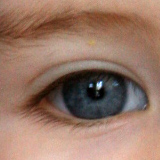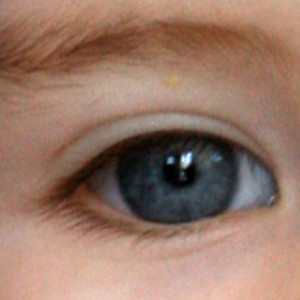Printing enlargements: How big can you go?
An utterly non-technical discussion about getting big prints from your camera.
The Question:
A common question heard from budding photographers is:
"How big can I print from my [insert megapixels here] camera?"
Printing your first enlargement is a nervous affair. You’ve seen magnificent big prints in galleries, and assume that those photographers have much more expensive and capacious cameras than yours. While this may be true in some cases, it should not deter you.
The Answer:
Quite simply, the answer is this: "As long as your photo is well-focused, you can print it as big as you like".
(Notice I said "well-focused", not "sharp". I’ll discuss this shortly.)
The Reason:
It’s all about viewing distance. You hold a 5×7″ print in your hand. You mount a 16×20″ on your wall. You hang a 2-metre banner behind the counter at the back of a shop. And you erect a 10-metre billboard on the other side of the road.
If you examined a billboard as closely as a 5×7″ print, of course you’d be disappointed. But you don’t, do you? You observe it from your car at the intended distance.
A photo will look exactly the same whether printed at high resolution and viewed closely, or printed at low resolution and observed from afar.
"The Eyelash Principle":
To delve further into this matter, we should ponder the human eye, and in particular the eyelashes.
Of all the photographs you could take in the universe, and all the possible combinations of aperture and shutter speed, one rule remains constant – eyes must be in focus.
Whether consciously or instinctively, when we look at a portrait, we judge its focus by looking at the eyes. Other features may be in focus, or not, depending on the intention of the photographer, and their chosen depth of field. But eyes must be in focus, or the photo fails.
This makes eyelashes a perfect specimen for our discussion. I submit to you that a properly-focused eyelash appears sharp at any size, or any distance.
The Evidence – Part One:
Take a look at this photo. Instinctively, you know it isn’t properly focused, right? Because the eyelashes aren’t quite distinguishable.

Now take a look at this one. We can see distinct lashes, so our brain says "that’s focused".

(FYI, we’re looking at 100% crops of s-o-o-c jpegs here. I have the raw files somewhere, but couldn’t be bothered finding them! Sorry about the jpeg grain.)
The Evidence – Part Two:
Here, I’ve enlarged both photos by about 230%. Despite that, the second one still appears well-focused. Why? That’s right – because the eyelashes are still distinguishable.


Notice that I’m still talking about "focus", not "sharpness". The second photo can no longer be regarded as "sharp", but it is still "in focus". And that is the key to my theory.
The Evidence – Part Three:
For kicks, let’s compare the uninterpolated not-quite-focused one with the enlarged well-focused one. Although it’s a closer contest, my brain still registers the second photo as the winner – what about yours? And try sliding your chair back a metre – now what do you think?


The Conclusion:
So I think that we judge focus, not sharpness, when looking at photographs. Sharpening is artificial, applied at some stage after the shutter clicks, but focus is what really matters.
I have discussed eyelashes, but I think the principle applies across the board. Our eyes and brains are much better at recognising good focus than we give them credit for. I believe that a well-focused photograph will look good at any size.
So, my friends, don’t hesitate. Pick your best shots, and enlarge them at will. They will do you credit.
A Footnote:
Am I suggesting that sharpening is unnecessary?
No, I’m certainly not. It’s a vital part of post-processing, and should not be disregarded. What I’m saying is, it’s no more or less important on a billboard than it is on a 5×7" print. In either case, it needs to be done carefully, and properly.
Sharpening will not save an out-of-focus photo, and it certainly won’t turn an out-of-focus photo into a masterpiece worthy of enlargement. What it does do is complement good focus, and give that extra "wow!" to an already great shot.
My Print Sharpening Class will rock your world, I promise.
